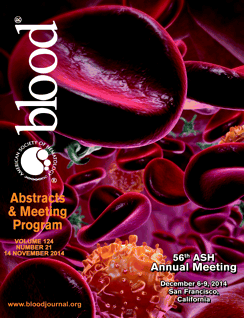Abstract
RAS mutations, especially in NRAS, are common in AML, identified in over 10% of the patients. The mutations lead to constitutive RAS activation and activation of multiple signaling pathways, including RAF/MAPK, PI3K-AKT/mTOR, and others. Many efforts to directly target RAS itself with small molecules have been unsuccessful. Thus, efforts have been directed at targeting canonical downstream effectors of RAS, such as RAF, MEK, and others. The complexity of RAS signaling, including redundancy and activation of compensatory pathways, makes it difficult to predict clinical effects. For example, RAF inhibitors increase proliferation of RAS-transformed cells by paradoxically increasing activation of MEK. In an effort to identify new therapeutic targets related to RAS, we designed a novel chemical screen to identify agents capable of potentiating the activity of the MEK inhibitor, AZD6244 (A), or the mTOR inhibitor, Torin1 (B). As a cell line to be used in the screen, BaF/3 cells were transformed with G12D mutants of NRAS or KRAS (Ba/F3-NRAS or Ba/F3-KRAS cells, respectively) and were shown to be exquisitely dependent on each oncogene for viability. Screen A: We identified the IGF-1R inhibitor, GSK1904529A, as able to selectively potentiate the effects of AZD6244 against mutant RAS-positive leukemia. GSK1904529A and AZD6244 synergized against mutant NRAS-expressing cell lines, OCI-AML3 and HL60, as well as active KRAS-expressing and -dependent cell lines, NOMO-1, NB4, and SKM-1, but not against wild-type (wt) RAS-expressing HEL or MOLM14 cells, or normal mononuclear cells. This result was confirmed with an additional IGF-1R inhibitor, NVP-AEW541, which exhibits 100-fold more selectivity toward IGF-1R than the insulin receptor (IR), and the specificity of IGF-1R as the target of these inhibitors was validated by knockdown (KD) of IGF-1R by shRNA. Mechanistically, IGF-1R protein expression/activity was substantially increased in mutant RAS-expressing cells, and suppression of RAS led to a decrease in IGF-1R. It is hypothesized that the increased IGF-1R levels observed in mutant RAS-expressing cells may contribute significantly to RAS transformation of hematopoietic cells. The synergy between MEK and IGF-1R inhibitors correlated with induction of apoptosis, inhibition of cell cycle progression, and decreased phospho-S6 and phospho-4E-BP1. In vivo, NSG mice tail vein-injected with OCI-AML3-luc+ cells showed significantly lower tumor burden following one week of daily oral administration of 50 mg/kg NVP-AEW541 combined with 25 mg/kg AZD6244, as compared to mice treated with either agent alone, and the combination was more toxic to mutant NRAS-expressing primary AML patient cells, compared to either agent alone. Screen B: We identified the Wee1 kinase inhibitor, MK-1775, which was unexpectedly found to potentiate mTOR inhibition of mutant RAS- leukemia. Wee1 is a protein kinase and inhibitory regulator of the G2/M checkpoint that prevents cells from going through mitosis by inhibiting the activity of CDK1. In response to DNA damage, Wee1 inactivates CDK1, thus leading to G2 arrest; this allows transformed cells the time needed for repair of damaged DNA and thus confers a survival advantage. The synergy was observed in both mutant NRAS- and mutant KRAS-positive AML cell lines and primary patient samples. The observed synergy enhanced dephosphorylation of AKT, 4E-BP1 and S6K, and correlated with increased apoptosis. The specificity of Wee1 as the target of MK-1775 was validated by Wee1 KD, as well as partial reversal of drug combination-induced apoptosis by inhibition of CDK1 by the CDK1 inhibitor, RO-3306. In a mouse in vivo xenotransplantation model, the combination treatment (10 mg/kg MK-1775 combined with 10 mg/kg Torin2) was more effective than single agents at suppressing the growth of NB4-luc cells that were tail vein-injected to NSG mice. The present studies suggest that combinations of drugs that simultaneously inhibit IGF-1R and MEK, or that inhibit Wee1 and mTOR, represent novel targeted therapeutic strategies for mutant RAS-positive leukemias.
No relevant conflicts of interest to declare.
Author notes
Asterisk with author names denotes non-ASH members.

